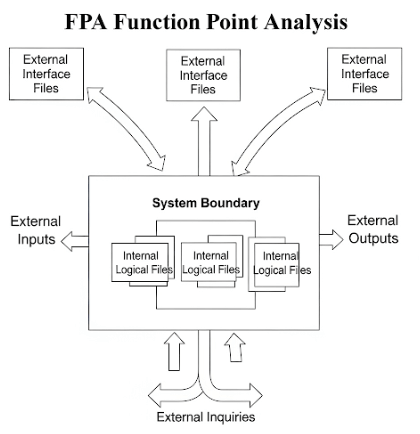- Testing Strategies
- A Strategic Approach To Software Testing
- Test Strategies for Conventional Software
- Black-Box and White-Box Testing
- Validation Testing
- System Testing
- The Art of Debugging
- Product Metrics
- Software Quality
- Metrics for Analysis Model
- Metrics for Design Model
- Metrics for Source Code
- Metrics for Testing
- Metrics for Maintenance
Introduction to Metrics for Analysis Model
During the early stages of software development, particularly within the analysis phase, it is crucial to measure and assess the quality and complexity of the requirements and initial system understanding. Metrics for the analysis model are quantitative measures applied at this foundational stage. These metrics serve as early indicators of project size, effort, and potential challenges. By gathering these insights, teams can make informed decisions, identify ambiguities, and address complexities before they become more expensive to resolve in later phases of the software development lifecycle.
Importance of Analysis Model Metrics
Applying metrics at the analysis model stage offers several significant benefits:
- Early Estimation: Provides a basis for estimating project size, cost, and effort, even before design or coding begins.
- Risk Identification: Helps in identifying potential risks associated with unclear or complex requirements.
- Improved Planning: Facilitates better project planning and resource allocation.
- Enhanced Communication: Offers a common, quantitative language for discussing requirements and their implications among stakeholders.
- Quality Assessment: Assesses the quality and completeness of the requirements document itself.
Key Metrics for the Analysis Model
Various metrics can be employed to evaluate the analysis model, each providing unique insights into the software system’s characteristics and the quality of its requirements.
Function Point (FP) Metric
The Function Point (FP) metric is a widely recognized and commonly used metric in the analysis model. It quantifies the functionality delivered by a software system from the user’s perspective, without considering the programming language or internal technical design. The core idea is to measure the amount of business functionality an information system provides.
How Function Points are Derived:
Function points are calculated by identifying and counting five major components of the software’s information domain, then adjusting for general system characteristics:
- External Inputs (EIs): Data or control information that enters the system from outside sources.
- External Outputs (EOs): Data or control information that leaves the system and goes to external destinations.
- External Inquiries (EQs): Inputs that result in an immediate output, typically a query to retrieve data.
- Internal Logical Files (ILFs): User-identifiable logical files within the system’s boundary.
- External Interface Files (EIFs): User-identifiable logical files external to the system but referenced by it.
Each of these components is then weighted based on its complexity (simple, average, or complex). The unadjusted function point count is further refined by considering 14 “Value Adjustment Factors” (VAFs) that account for various processing complexity characteristics, resulting in the final adjusted Function Point count.
Advantages of Function Point Analysis:
- Language Independent: Measures functionality regardless of the technology used for implementation.
- Early Estimation: Can be applied early in the software lifecycle, directly from the requirements specification.
- User-Oriented: Focuses on the functionality delivered to the user, making it understandable to non-technical stakeholders.
- Benchmarking: Allows for comparison of project size and productivity across different projects or organizations.
Disadvantages of Function Point Analysis:
- Subjectivity: The weighting of components and adjustment factors can sometimes be subjective, depending on the interpreter.
- Requires Training: Proper application requires knowledge and experience in Function Point counting rules.
- Does not Measure Quality: Primarily measures size/functionality, not quality attributes directly.

Information Flow Metrics
These metrics analyze the flow of information among different entities, components, or processes as defined in the requirements and analysis model. They help in understanding dependencies, potential communication bottlenecks, and the overall architecture from an information perspective. By evaluating these flows, developers can assess the clarity and efficiency of information exchange within the proposed system.
Data Structure Metrics
Data structure metrics are used to assess the complexity, clarity, and relationships of data elements within the proposed system’s data model or schema. In the analysis phase, this might involve evaluating entity-relationship diagrams or data dictionaries. These metrics can help ensure that the data model is well-organized, consistent, and robust, which is foundational for reliable software. For instance, analyzing the number of relationships between entities or the depth of data hierarchies can provide insights into potential complexities.
Conclusion
Metrics for the analysis model, particularly Function Point analysis, are indispensable tools for managing software development effectively from its earliest stages. They provide quantitative insights into the software’s functional size and the characteristics of its requirements, enabling better estimation, planning, and risk management. By focusing on these early metrics, development teams can build a solid foundation, leading to more predictable and successful software projects.
